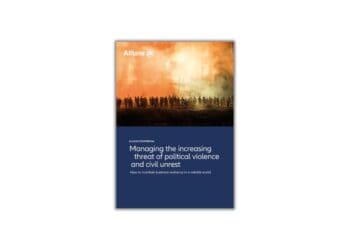The Nepal earthquake, which triggered massive destruction from the Himalayan Mountains to India, is more than a tragic story of bad luck. It’s an example of how little we really understand risk and the consequences of our inability to fully absorb events such as earthquakes in Nepal and Haiti and other natural disasters that are so devastating.
Even our perception of these events is skewed. According to the USGS website, the U.S. government’s official site for monitoring earthquakes, approximately one major earthquake of magnitude 8.0 or greater has occurred each year over the last 24 years. We tend to discount major disaster in our own lives while believing there is a higher probability that others may suffer calamity. That may explain why so many say we “never saw that coming” when disaster strikes. Many of these quakes have occurred with little damage or no deaths, but we remember the ones with a high death toll and quickly dismiss the others.
Given our inability to look into the future, the question is: has our world become more or less risky? Well, it depends! For many of us, the perception of risk depends on our own circumstances. Let’s take two people of similar age but from remarkably different backgrounds.
The first person is a young woman in the U.S. preparing to go to college and prepare for her chosen career. The second person, a young woman who happens to live in Nepal, which was ravished by the recent earthquake. The differences in how each person sees risk becomes quite obvious when the circumstances faced by the other are taken into account.
For each person reading this article, his or her own perception of risk will differ from another’s, which simply means that risk is relative to our ability to absorb the risk. Starting with $1 billion, I am more willing to risk $1 million if I believe my return will be greater. By the same token, if I have only $10,000, I may be more reluctant to risk $1,000 on a relative basis.
Tragically, a recent CNN report noted that only 14 percent of the projected aid needed in Nepal has been committed to, and even less has reached those most affected. The most remote villages in the region are at risk of large-scale human disaster unless more can be done. As in Port-au-Prince, Haiti, there will be a continuing effort to bring normalcy back to Nepal. The resources may never match the need, given the lack of infrastructure both in physical and financial terms.
Can we learn lessons from these events? Or are these simply examples of bad luck? The answer is — surprisingly — yes to both questions.
Thankfully, most of the risks that we deal with on a daily basis are not on the scale of an earthquake. Yet do we understand the probabilities of the “earthquakes” in our industry or business? What do I mean by that? If you live in Asia, the likelihood of a large earthquake is greater than if you live in New England. Understanding the difference can be a subtle but powerful tool for dealing with uncertainty.
Bad luck happens! But is it possible to anticipate and plan for uncertainty? Intuitively, we make these decisions everyday. We predict the odds of outcomes in a variety of ways; some are crude measures of experience and others include some level of sophistication. But is rolling the dice enough? Of course not!
Developing a basic understanding of probability helps to put risk in perspective. Even simple models are useful and can provide information that we may not otherwise consider. Any model of probability will have a degree of error, depending on the quality of the data used in the model and the sophistication of the model builder. The key point is that we do not have the ability to fully understand risk without some assistance.
Understanding the variance in error rate is more important than the perceived accuracy of the model.
Practitioners of probabilistic modeling are good cynics of their own ability to predict with accuracy. Even more important than understanding your error rate may be the ability to make plans for an eventuality you hope never happens.
The take away is that organizational awareness of risk is a process of refinement over time where no one gets it right 100 percent of the time. Perceived in this light, risk management is the process of learning your error rate and finding ways to narrow the gap.
Firms who go beyond risk measurement and assessment to a model of monitoring the gap in error rates may learn more about their risk management program than by only looking at what risk they avoided.



 James Bone’s career has spanned 29 years of management, financial services and regulatory compliance risk experience with Frito-Lay, Inc., Abbot Labs, Merrill Lynch, and Fidelity Investments. James founded Global Compliance Associates, LLC and TheGRCBlueBook in 2009 to consult with global professional services firms, private equity investors, and risk and compliance professionals seeking insights in governance, risk and compliance (“GRC”) leading practices and best in class vendors.
James Bone’s career has spanned 29 years of management, financial services and regulatory compliance risk experience with Frito-Lay, Inc., Abbot Labs, Merrill Lynch, and Fidelity Investments. James founded Global Compliance Associates, LLC and TheGRCBlueBook in 2009 to consult with global professional services firms, private equity investors, and risk and compliance professionals seeking insights in governance, risk and compliance (“GRC”) leading practices and best in class vendors.





